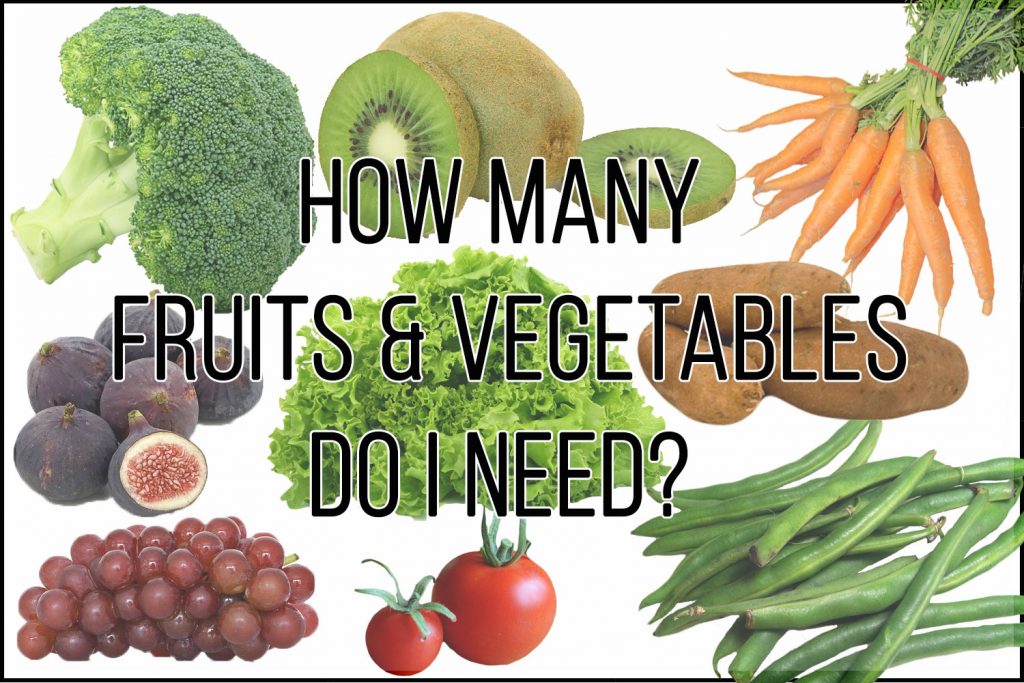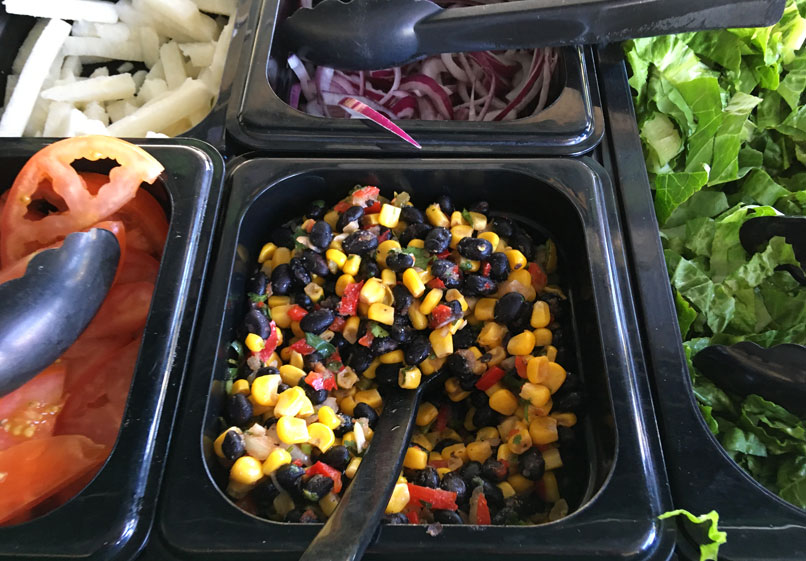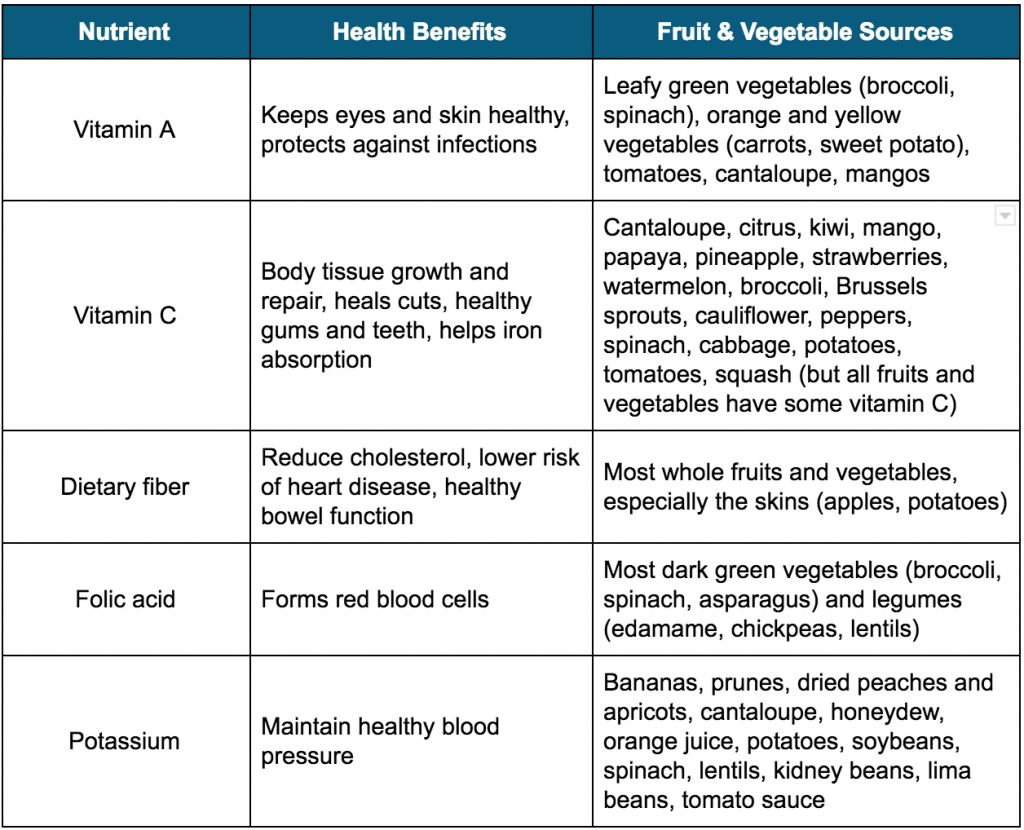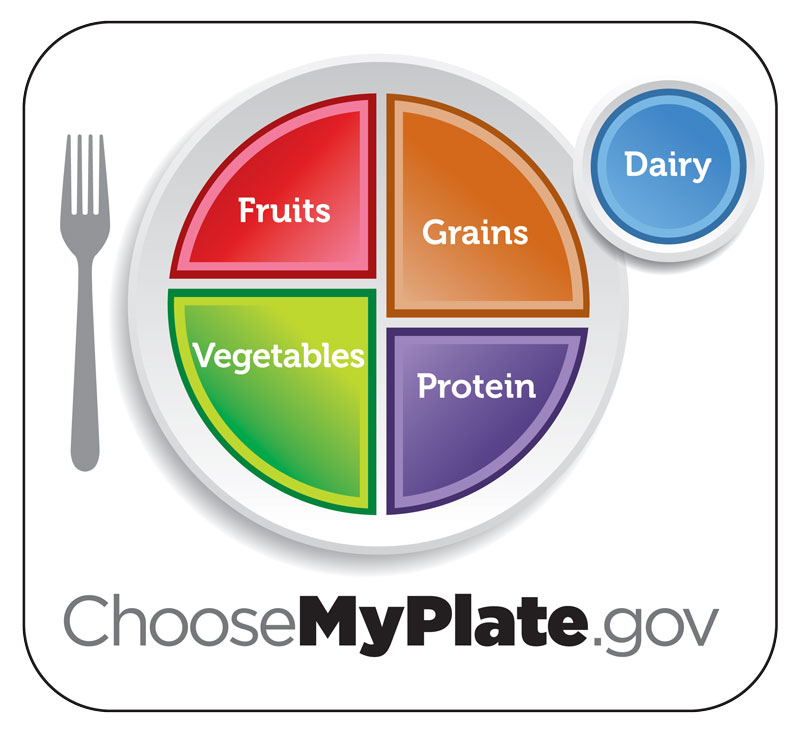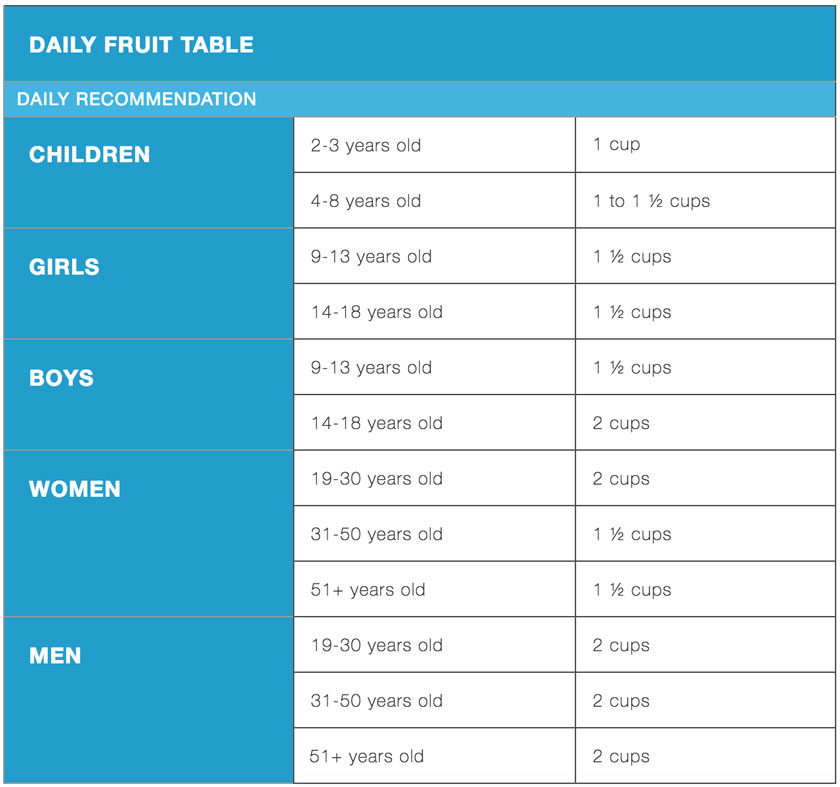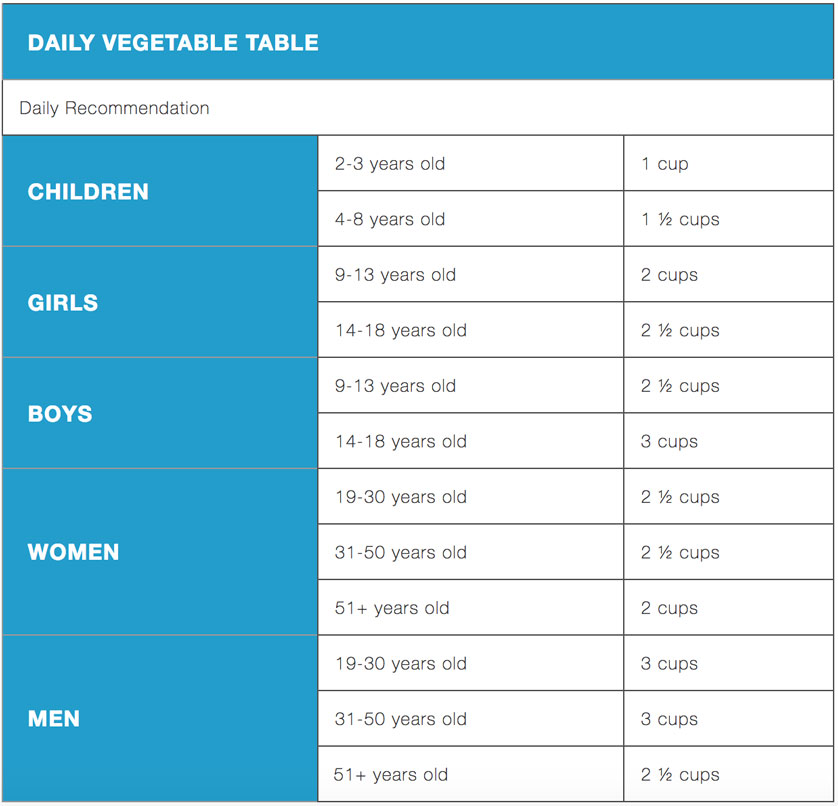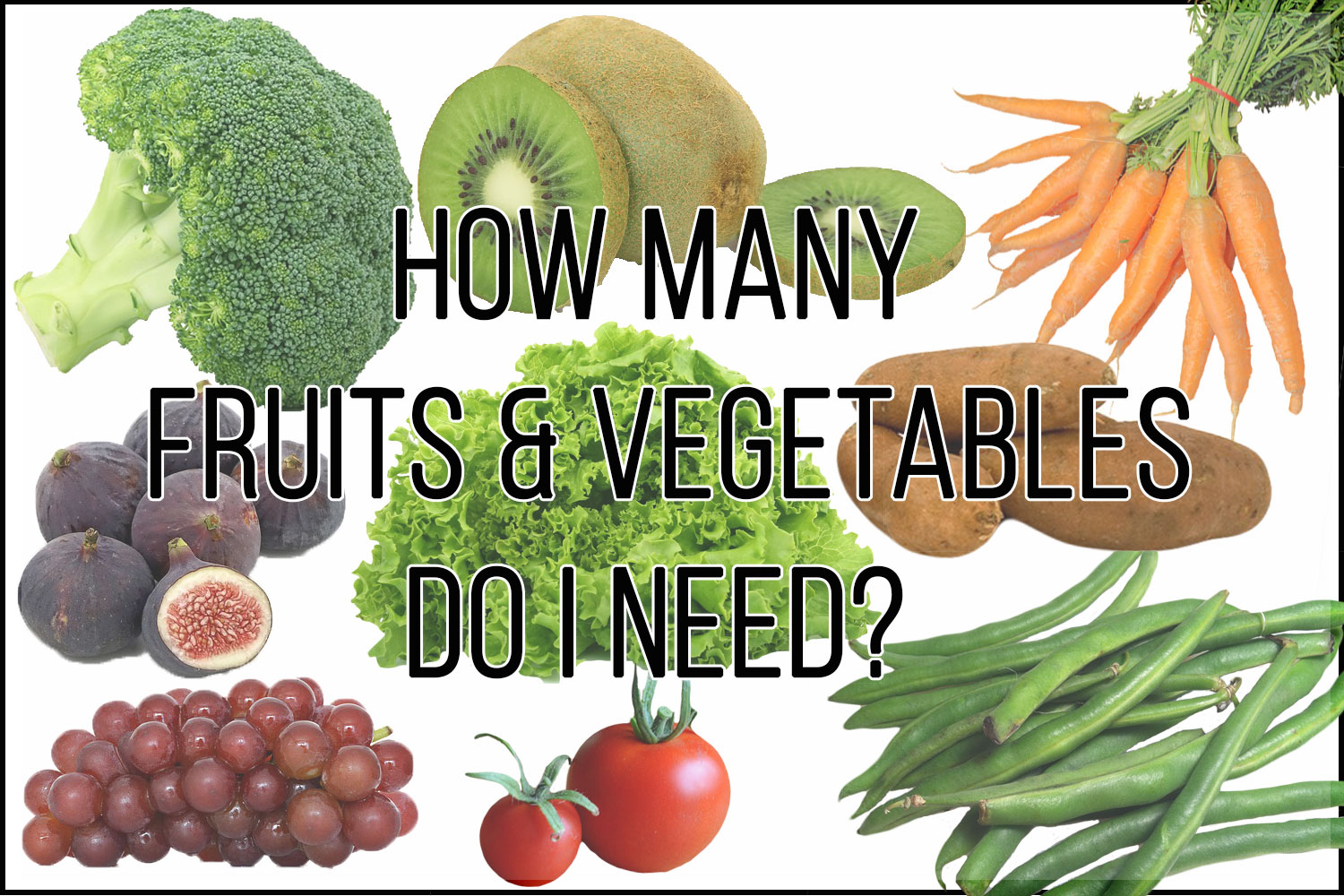
How many fruits and vegetables do I need?
October 17th, 2018
Why do I need to eat fruits and vegetables?
Fruits and vegetables provide us with many health benefits and nutrients that we would not be able to get otherwise. There’s no such thing as an unhealthy fruit or vegetable! But some are more nutritious than others. In fact, there are different subcategories of vegetables based on their levels of nutrients: dark-green, starchy, red and orange, beans and peas, and other.
Fun fact: Beans and peas do double duty – they’re part of the vegetable group AND the protein group! They’re full of dietary fiber, folic acid, potassium, and protein.
Here are some of the benefits of eating a healthy diet with plenty of fruits and vegetables:
• Can reduce your risk for heart disease, obesity, kidney stones, and type 2 diabetes
• Some fruits and vegetables can help protect against certain cancers
• Can lower blood pressure and decrease bone loss
• Can reduce calorie intake and support healthy weight loss
Fruits have natural sugars, but these aren’t unhealthy. In fact, these sugars provide natural energy! Try having an apple the next time you feel sluggish – you’ll perk right up. The nutrients and natural energy help your body feel energized and motivated.
How many fruits and vegetables do I need to eat?
Like all foods, how many fruits and vegetables you need depends on your age, sex, and activity level. The easiest way to remember how much to eat is to make half your plate fruits and vegetables.
Most people should eat 1 ½ to 2 cups of fruit and 2-3 cups of vegetables each day. If you’re physically active, you may be able to eat more without eating too many calories. A cup of whole fruit, a cup of 100% fruit juice, or ½ cup of dried fruit counts as a cup of fruit. A cup of whole vegetables, a cup of vegetable juice, or 2 cups of raw leafy greens count as a cup of vegetables.
While 4 ounces of juice counts as a serving of fruits and vegetables, it’s important to pay attention to the nutrition label to make sure the juice is actually healthy. Many fruit juices have added sugars, while vegetable juices can have added sodium. Some aren’t even all juice – look for labels that say 100% juice. Canned vegetables, including soups, can also have hidden sodium, so check the label for reduced sodium, low sodium, or no salt added.
It’s best to mostly eat whole fruits and vegetables, which have the most nutrients. Fruit and vegetable juice doesn’t provide the fiber your body needs. Whole fruits and vegetables can be cooked or raw, chopped or mashed, and fresh, frozen, or canned. They all have nutritious fiber benefits!
Fun fact: Lettuce is the only vegetable that’s never sold frozen or canned – only fresh!
Tips for eating more fruits and vegetables:
• Keep whole fruits, such as apples, oranges, and tomatoes, on the counter where they’re easy to see and grab for a snack.
• Chop and refrigerate fruits and vegetables ahead of time so they’re easy to add to your meals.
• Make yummy, healthy dips using low-fat Greek yogurt or avocado.
• Keep frozen, canned, or dried fruits on hand for when you run out of fresh fruits.
• Keep frozen or canned vegetables to toss into other dishes.
• Buy fresh fruits and vegetables when they’re in season, when they’re more likely to taste better.
• Eat the rainbow! For example, red tomatoes, orange carrots, yellow bell peppers, green spinach, blueberries, and purple cabbage.
Add fruits and vegetables to meals you already love:
• Add berries or sliced bananas to yogurt, cereal, or oatmeal in the morning. Top on pancakes on the weekend!
• Add frozen broccoli or peas to your next casserole.
• Put some peppers or even peaches on the grill next time you’re making burgers.
• Make a vegetarian chili with beans, corn, and hearty lentils.
• Add zucchini, carrots, and mushrooms to your pasta sauce.
• Stuff bell peppers with black beans and quinoa for a high protein dinner.
• Spread peanut butter on apple slices for an afternoon snack.
• Freeze berries in 100% fruit juice for a cool dessert.
• Blend a mix of fruits (such as bananas and berries) and vegetables (such as kale or spinach) in a smoothie!

